Posts Tagged: colony
Squirrel Vs. Bees: Sorry, No Vacancy!
Call it “The Battle Over a Tree Hollow." Feral bees have occupied—and abandoned—a sycamore tree cavity in a Vacaville neighborhood for at least two decades. They occupy it in the spring, summer and fall, and then the colony either...
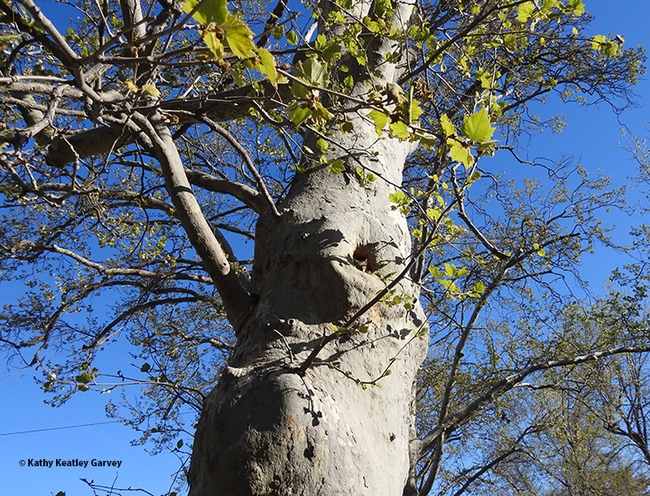
Look closely and you can see a squirrel occupying a small hollow or cavity in a sycamore tree. The cavity has been home to feral bees for at least two decades. (Image taken in Vacaville by Kathy Keatley Garvey)
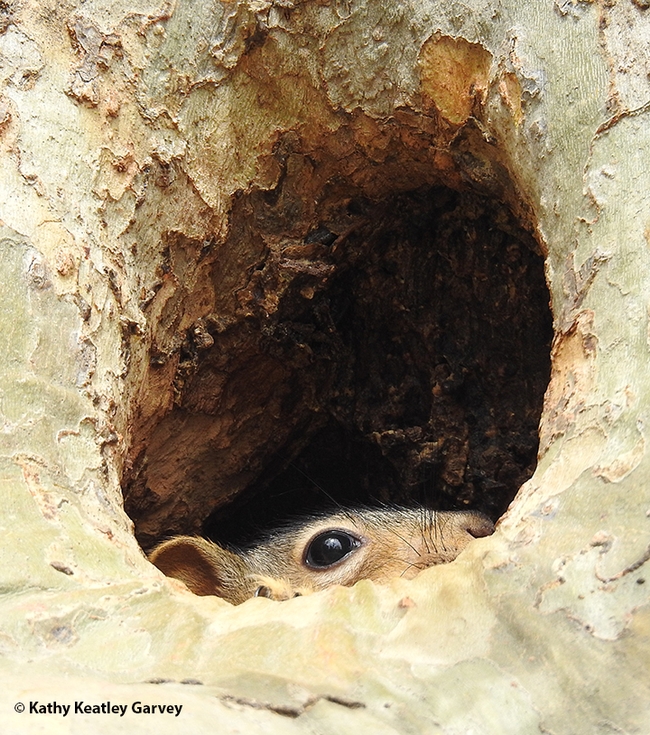
What's all that noise about? Can't a squirrel get some sleep? (Photo by Kathy Keatley Garvey)
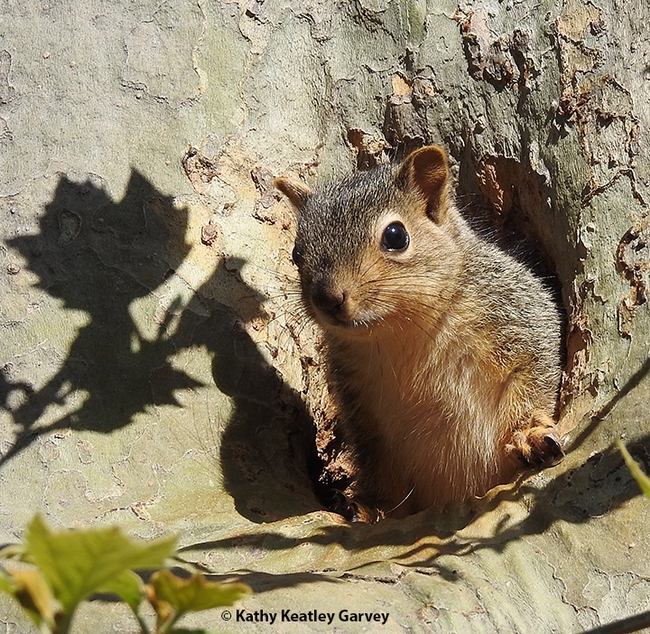
The squirrel pokes his head out of his home, his sleepy hollow. (Photo by Kathy Keatley Garvey)
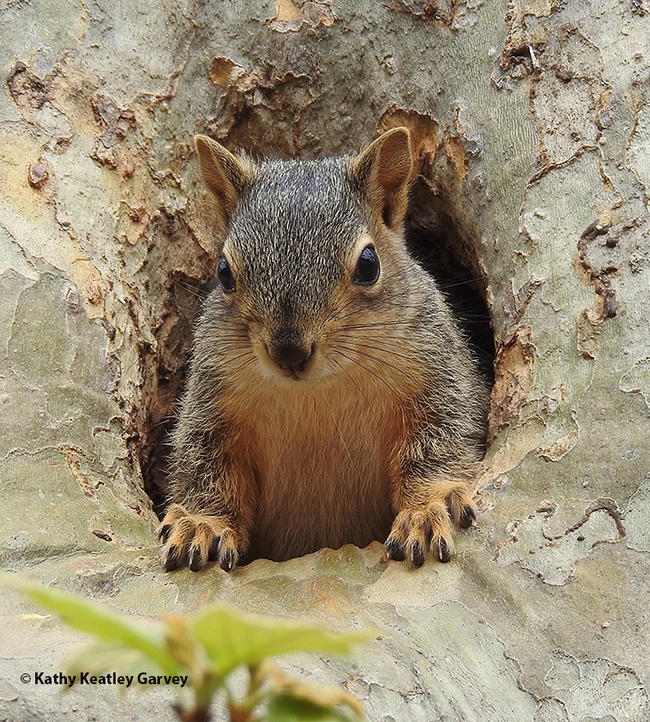
Occupied! No vacancy! The squirrel is aware that bees are circling, trying to move into "his" hollow. (Photo by Kathy Keatley Garvey)
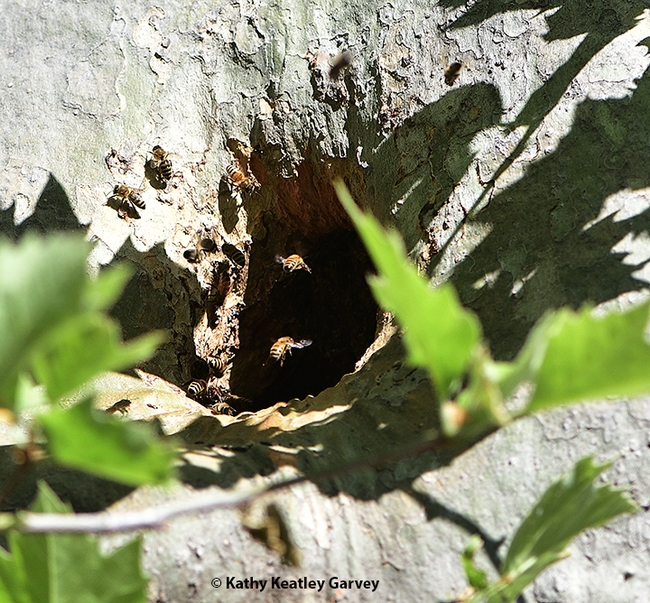
With the squirrel gone, honey bees quickly move into the hollow. (Photo by Kathy Keatley Garvey)
Feral Bee Colony in Kenya: Nothing Short of Incredible
"EVERYTHING that colonies do when they are living on their own (not being managed by beekeepers) is done to favor their survival and their reproduction, and thus their success is contribution to the next generation of colonies. And I mean...
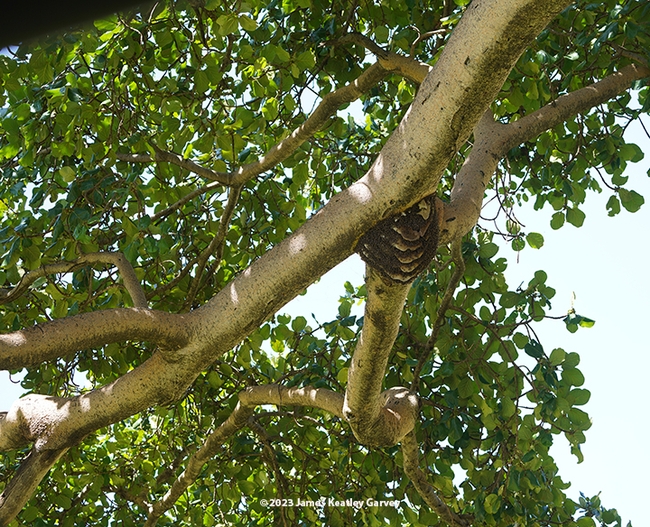
A feral or wild bee colony in a fig tree in the Maasai Mara National Reserve, southern Kenya. (Photo by James Keatley Garvey)
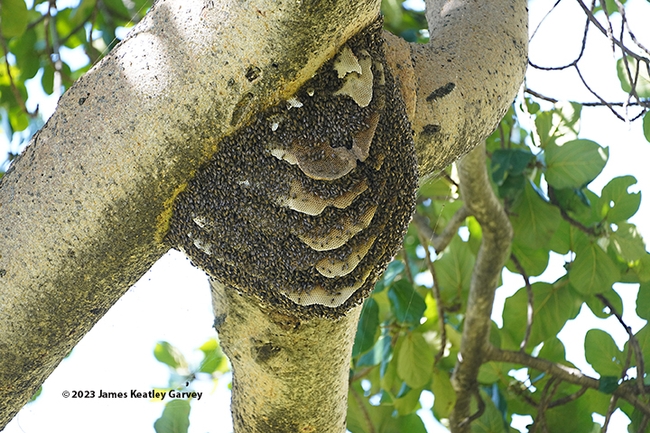
Close-up of a feral or wild bee colony in a fig tree in the Maasai Mara National Reserve, southern Kenya. (Photo by James Keatley Garvey)
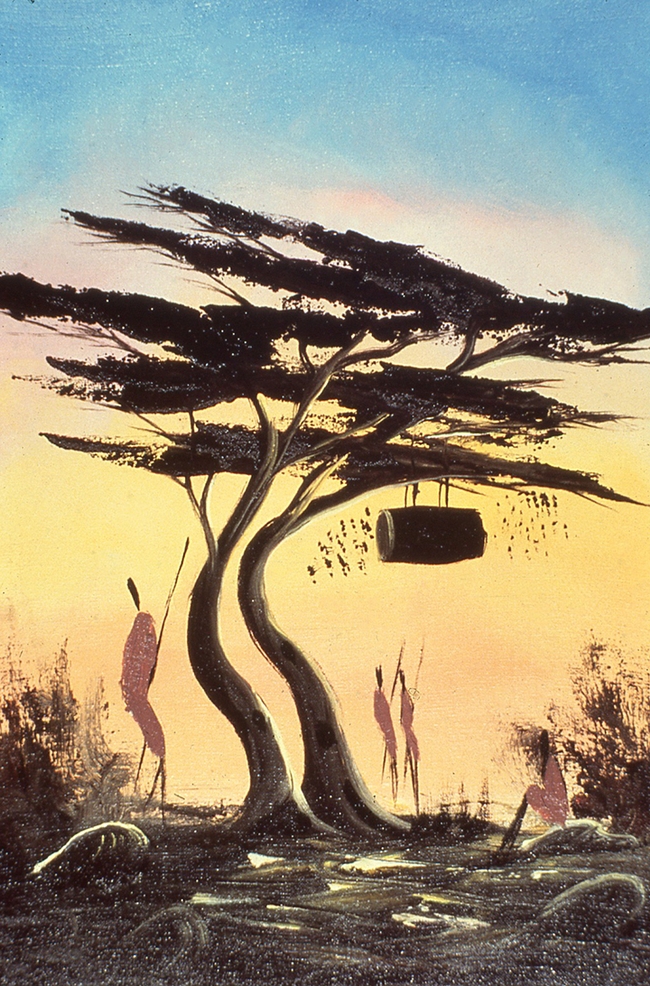
This image is of a painting of a log hive that Cornell professor Roger Morse purchased in a market in Kenya in the 1970s. (Photo courtesy of Thomas Seeley)
Remember "BSI: The Case of the Disappearing Bees?"
Remember the alarm, the anxiety and the agony when news first surfaced about colony collapse disorder (CCD)? Wikipedia defines CCD as "an abnormal phenomenon that occurs when the majority of worker bees in a honey...
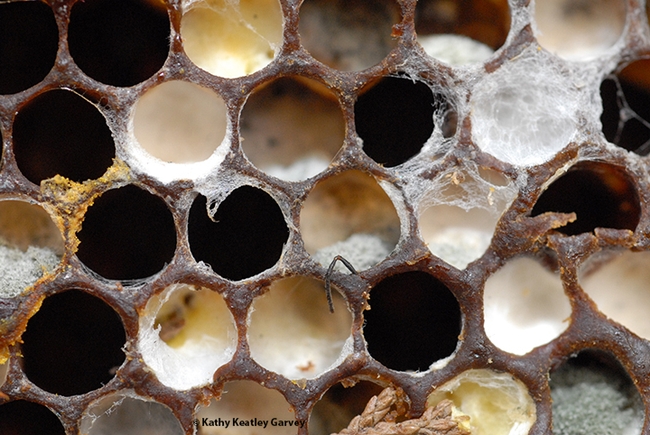
Close-up image of cells in an abandoned hive; colony collapse disorder suspected. Note the bee antenna near the center. And the mold. (Photo by Kathy Keatley Garvey)
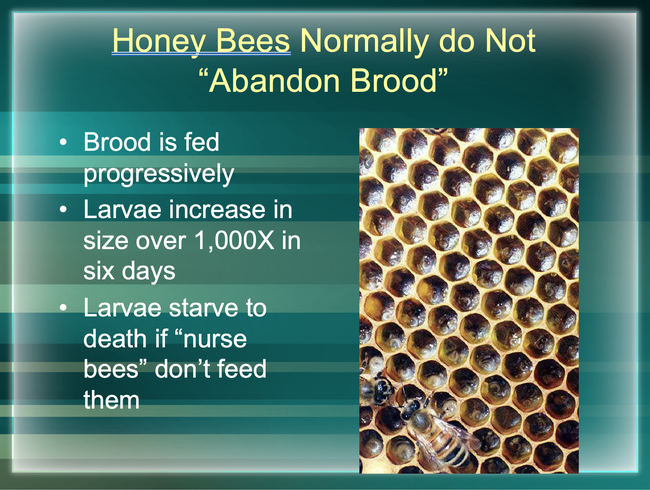
One of the slides in Eric Mussen's presentation on colony collapse disorder.
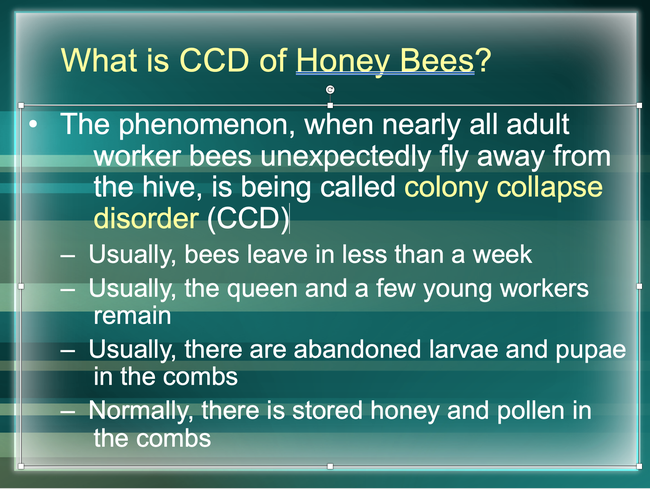
Extension apiculturist Eric Mussen briefly explained colony collapse disorder in this slide.
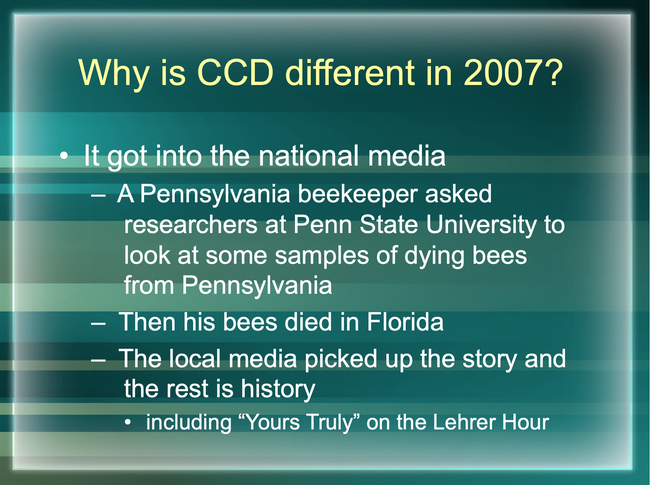
In this slide, Extension apiculturist Eric Mussen explained what sparked the colony collapse disease fury.
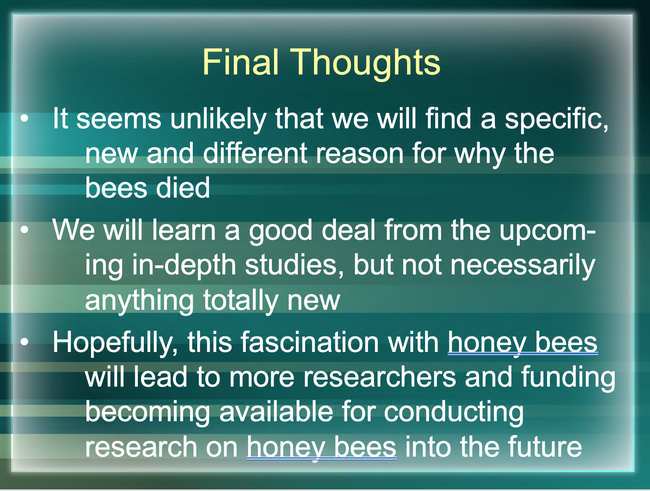
Extension apiculturist Eric Mussen detailed final thoughts about colony collapse disorder in this slide.
I'm Just a Little Ol' Honey Bee Foraging on Lavender
I'm just a little ol' honey bee foraging on lavender. I left my warm colony in Vacaville, Calif. to see if there's any nectar out there. My sisters are hungry. I'm not sure if we have enough honey to tide us over until spring. Look, here's some...
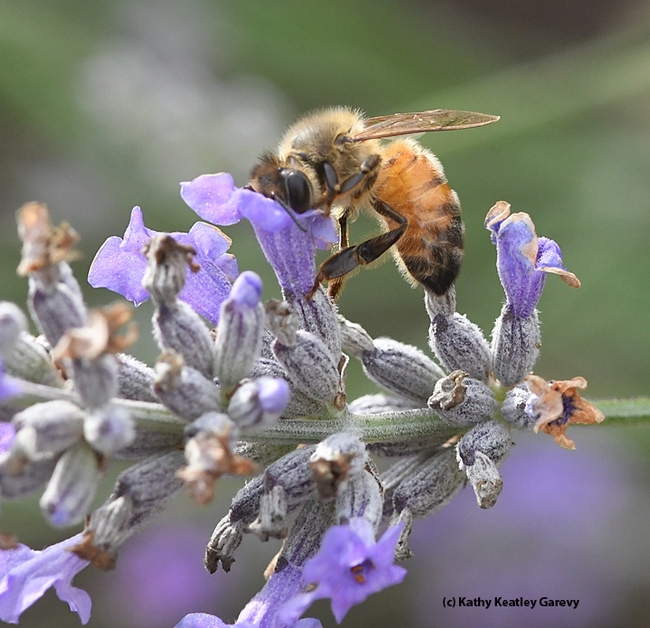
Peek-a-bee! Hi, it's just me, a honey bee foraging on lavender in mid-December in Vacaville, Calif. (Photo by Kathy Keatley Garvey)
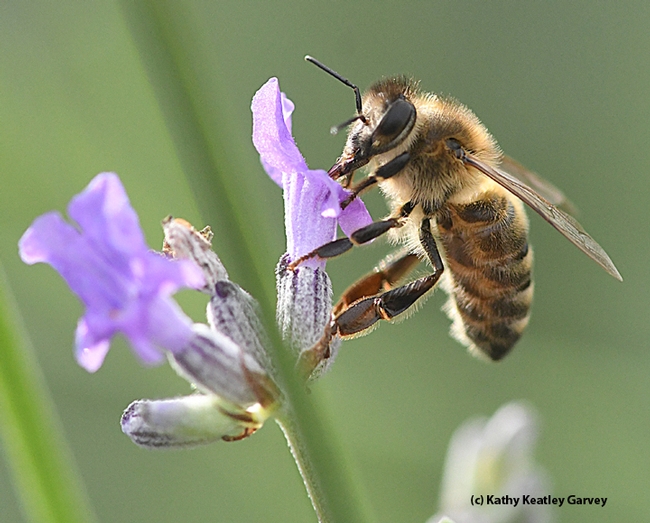
Ahh, nectar! See my tongue (proboscis)? (Photo by Kathy Keatley Garvey)
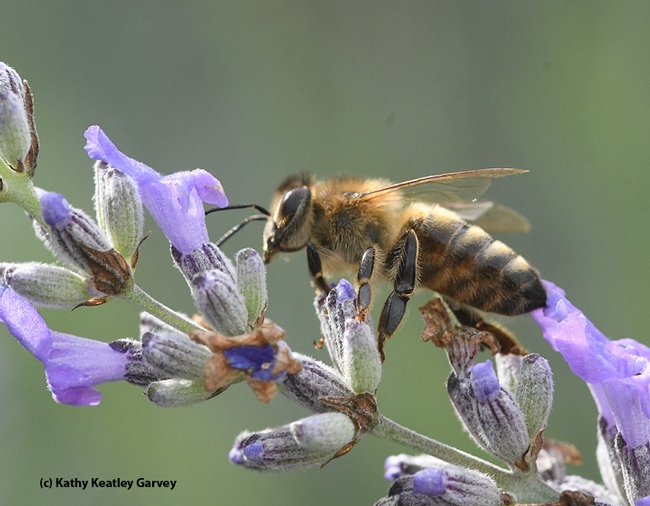
I think I'll crawl over to the next blossom. Nobody around to stop me! (Photo by Kathy Keatley Garvey)
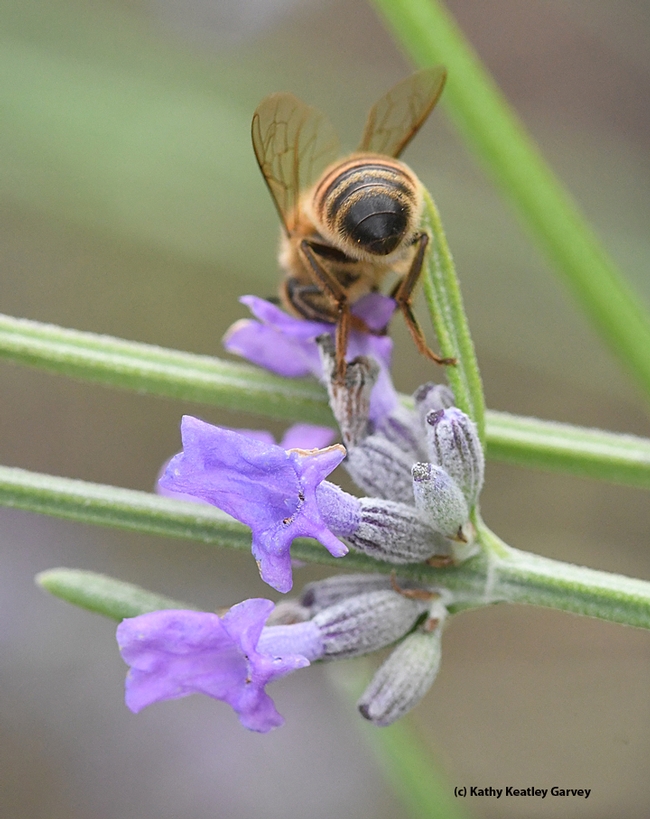
Bye, bye! That's it for me. (Photo by Kathy Keatley Garvey)
Bears Raiding Bee Colonies: They're Seeking the Brood
Yes, bears raid honey bee colonies. But it's primarily for the bee brood, not the honey. The brood provides the protein, and the honey, the carbohydrates. For beekeepers and commercial queen bee breeders, this can wreak havoc. Financial...
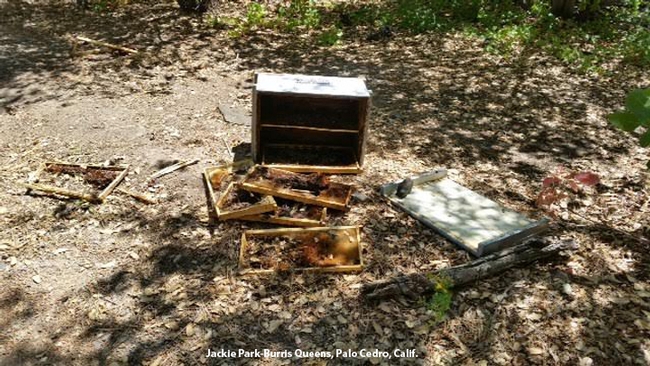
This is what bear damage to a hive looks like. This photo was provided by Jackie Park-Burris of Palo Cedro, who owns Jackie Park-Burris Queens. (Photo courtesy of Jackie-Park Burris)
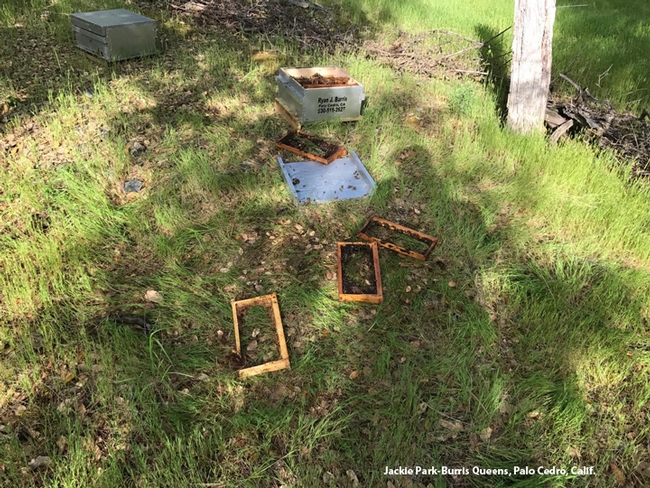
A bear scattered frames all over this bee yard as it went for the brood, and then the honey. (Photo courtesy of Jackie Park-Burris, Palo Cedro)
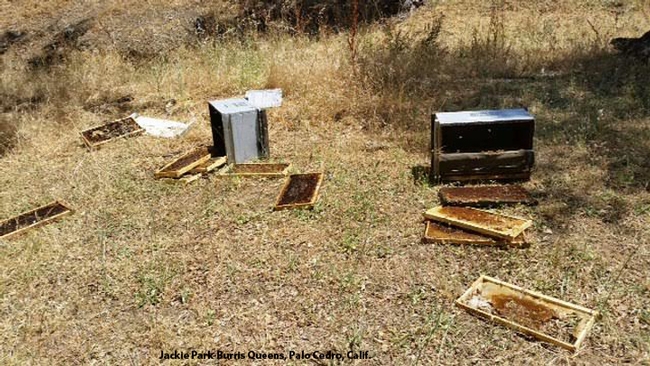
A bear wreaked havoc in this bee yard. (Photo courtesy of Jackie Park-Burris, Palo Cedro)
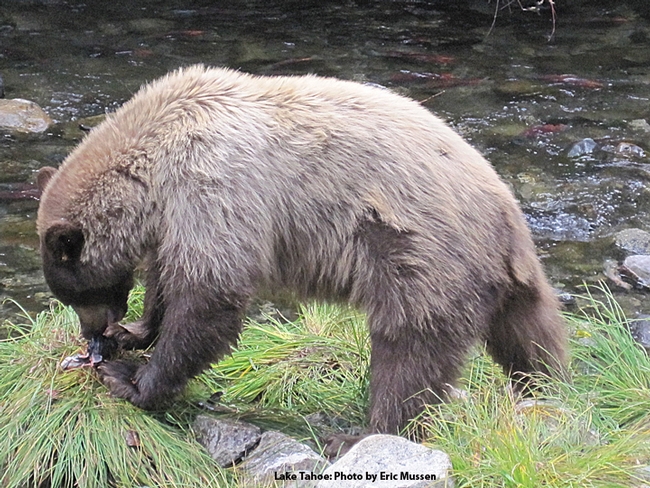
This image of a bear snagging fish was taken at Lake Tahoe by Eric Mussen, Extension apiculturist emeritus, UC Davis Department of Entomology and Nematology. He's been answering questions about bears and bees for more than three decades.

